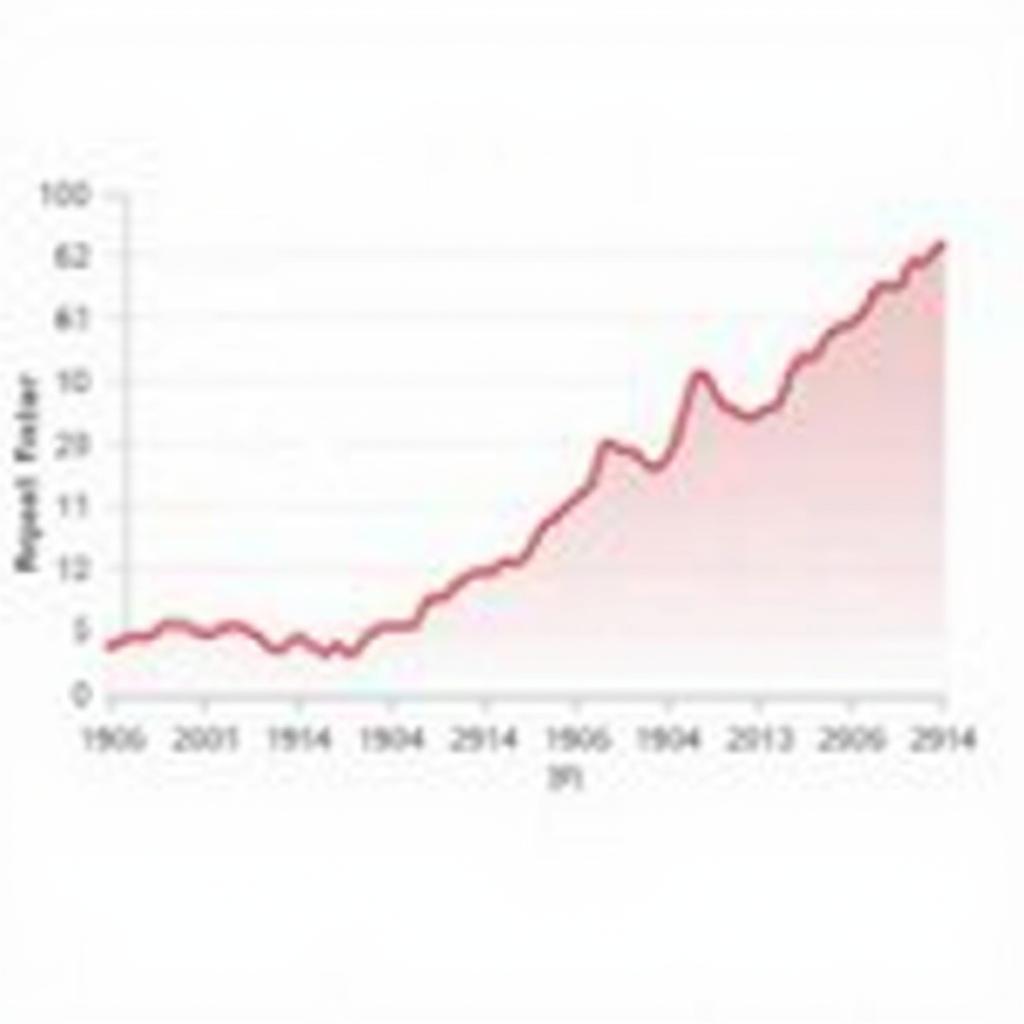The Journal of the Royal Society Interface impact factor is a metric that reflects the journal’s influence and reach within the scientific community. This prestigious journal, dedicated to publishing cutting-edge research at the crossroads of physical and life sciences, attracts a global audience eager to engage with groundbreaking discoveries. But what exactly does this impact factor mean, and why should researchers and readers alike care about it?
 Journal of the Royal Society Interface Impact Factor Graph
Journal of the Royal Society Interface Impact Factor Graph
Understanding the Impact Factor
The impact factor, often abbreviated as JCR Impact Factor, is a numerical value assigned to academic journals to assess their relative importance and influence within their respective fields. Essentially, it measures how frequently articles published in a particular journal have been cited by other researchers in the past few years.
A higher impact factor generally suggests that a journal’s articles are more widely read, cited, and considered influential in shaping scientific discourse. For the Journal of the Royal Society Interface, its impact factor serves as a testament to its role in advancing interdisciplinary research and fostering collaboration between diverse scientific disciplines.
Why the Impact Factor Matters
The impact factor, while not a perfect metric, carries significant weight in the academic world for several reasons:
- Funding Decisions: Research funding agencies often consider a journal’s impact factor when evaluating grant applications. Publishing in high-impact journals can bolster a researcher’s chances of securing funding for their work.
- Career Advancement: For academics, publishing in journals with high impact factors can be crucial for career progression. Promotion and tenure committees often view such publications as indicators of research productivity and influence.
- Dissemination of Knowledge: High-impact journals often have a wider readership and greater visibility within the scientific community. This broader reach can lead to increased dissemination of research findings and accelerate the pace of scientific discovery.
The Journal of the Royal Society Interface: Fostering Interdisciplinary Excellence
The Journal of the Royal Society Interface distinguishes itself by focusing on the interface between physical and life sciences. This unique niche allows the journal to:
- Bridge Disciplinary Divides: By publishing research that transcends traditional disciplinary boundaries, the journal fosters collaboration and cross-fertilization of ideas between fields.
- Address Complex Challenges: Many of the world’s most pressing challenges, such as climate change, disease outbreaks, and technological advancements, demand interdisciplinary solutions. The Journal of the Royal Society Interface provides a platform for showcasing research that tackles these complex issues from multiple perspectives.
- Promote Innovation: The intersection of different fields often sparks innovation and leads to breakthroughs that would not be possible within a single discipline. The journal’s commitment to interdisciplinary research fosters a fertile ground for scientific innovation.
Navigating the Impact Factor Landscape
While the impact factor provides a valuable snapshot of a journal’s influence, it’s essential to remember that it’s just one piece of the puzzle. Other factors, such as the journal’s scope, readership, and editorial standards, also play a significant role in its overall impact.
Researchers and readers alike should consider the impact factor in conjunction with other metrics and qualitative assessments when evaluating the significance of a journal or a particular research article. The Journal of the Royal Society Interface, with its dedication to interdisciplinary excellence and its growing impact factor, continues to solidify its place as a leading platform for groundbreaking scientific discovery.
FAQs about the Journal of the Royal Society Interface Impact Factor
1. What is the current impact factor of the Journal of the Royal Society Interface?
You can find the most up-to-date impact factor on the journal’s website or through databases like Journal Citation Reports.
2. How is the impact factor calculated?
The impact factor is calculated by dividing the number of citations received by articles published in the journal during a specific period by the total number of citable articles published in the journal during that same period.
 Researcher Analyzing Data on Impact Factor
Researcher Analyzing Data on Impact Factor
3. Does the impact factor vary between different fields of science?
Yes, impact factors tend to vary significantly between different scientific disciplines. Fields with faster publication rates and higher citation practices generally have higher impact factors.
4. Are there any limitations to using the impact factor as a measure of journal quality?
Yes, the impact factor has limitations. It can be influenced by factors such as self-citation and the publication of review articles, which tend to receive more citations.
5. What other metrics can be used to assess the quality and impact of scientific journals?
Other metrics include the Eigenfactor Score, SCImago Journal Rank (SJR), and h-index. Additionally, qualitative factors like the journal’s reputation, editorial board, and peer-review process should also be considered.
Need Assistance? We’re Here to Help!
If you have any questions or need support, please don’t hesitate to reach out to us:
Phone: 02043854663
Email: societyforpeace@gmail.com
Address: Khu 34, Bac Giang, 260000, Vietnam
Our dedicated customer support team is available 24/7 to assist you.
 using WordPress and
using WordPress and